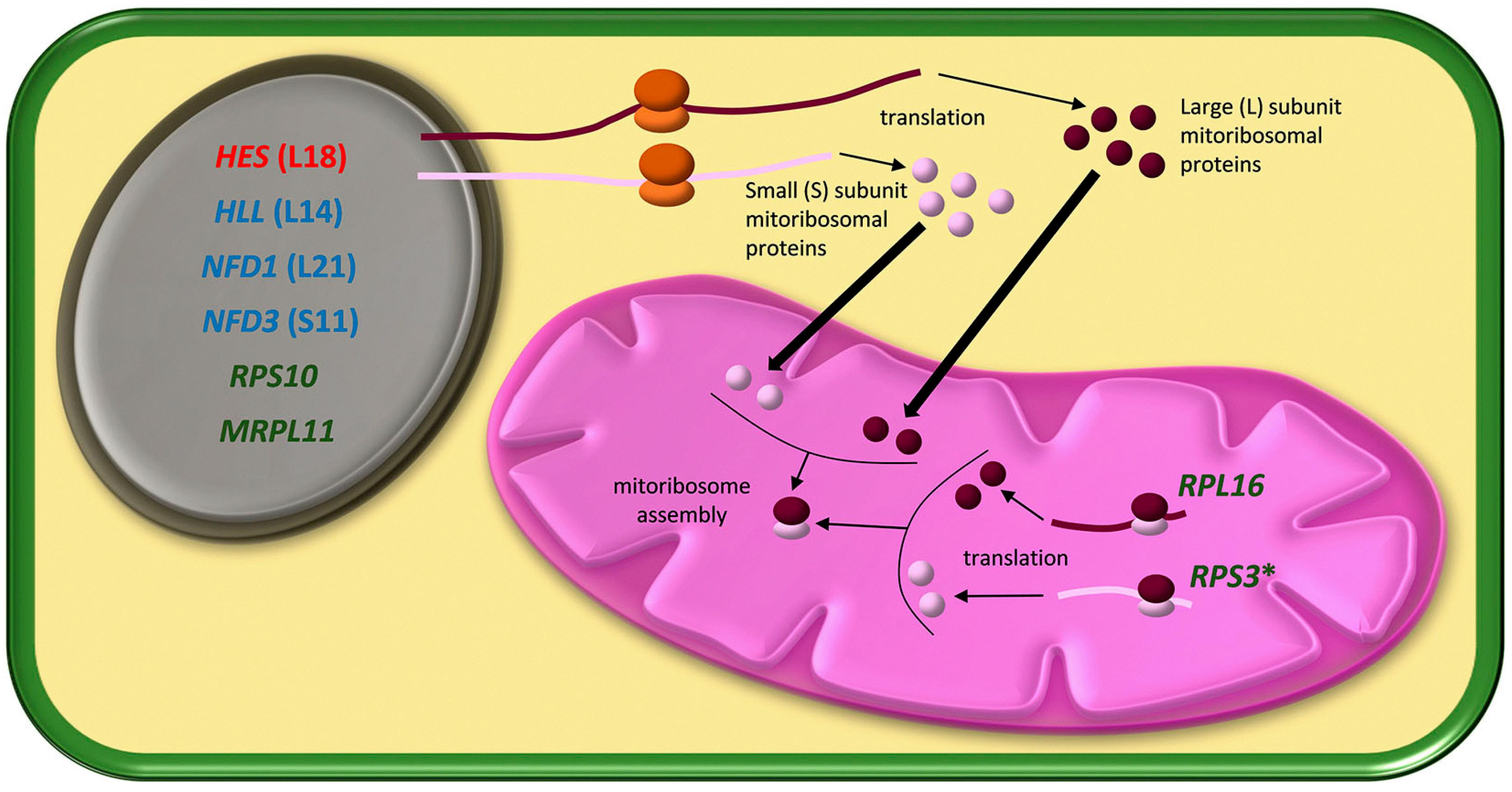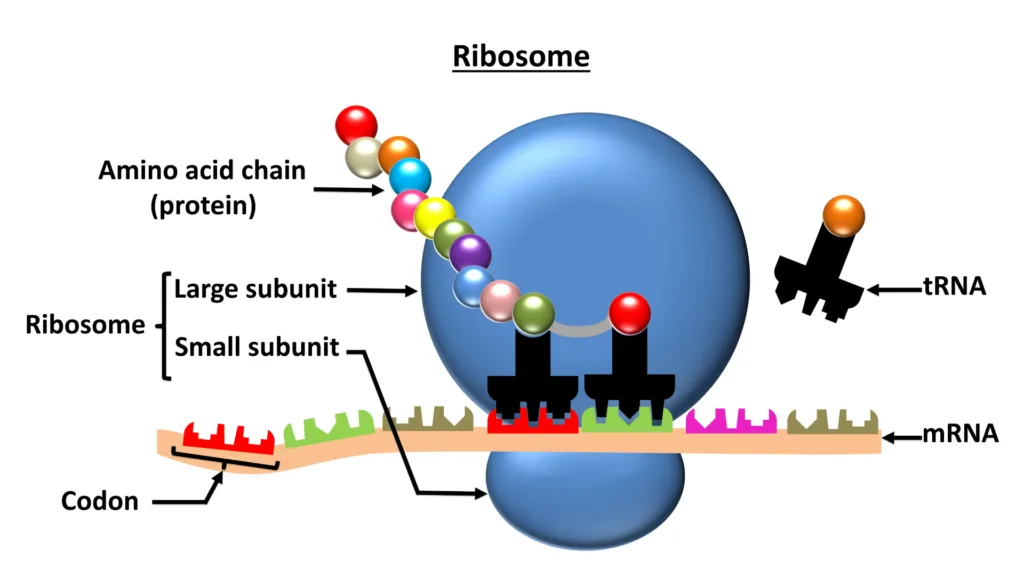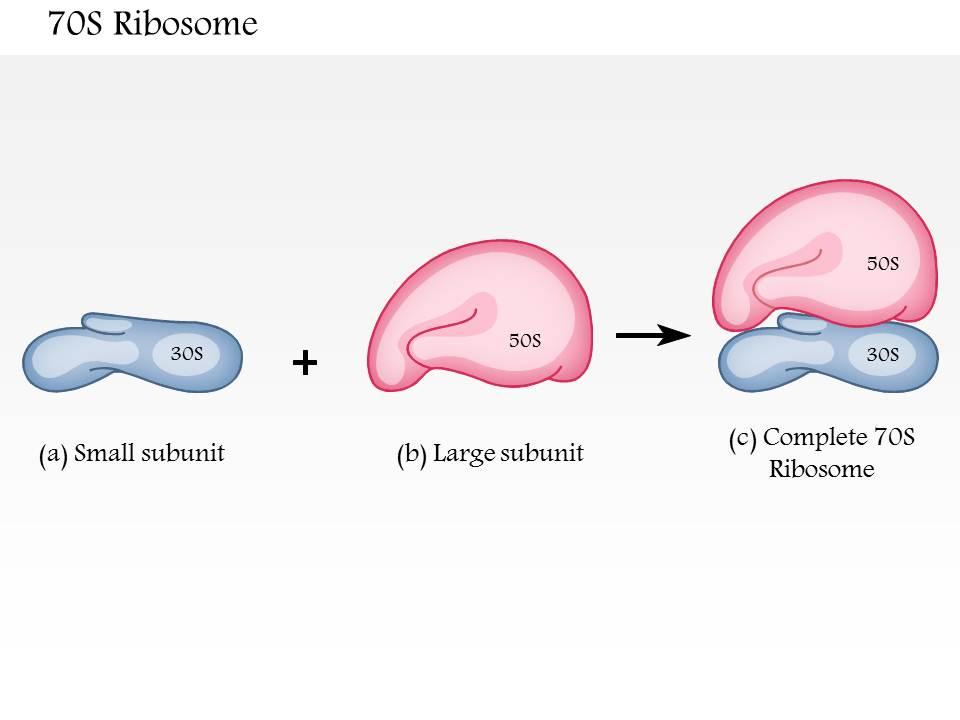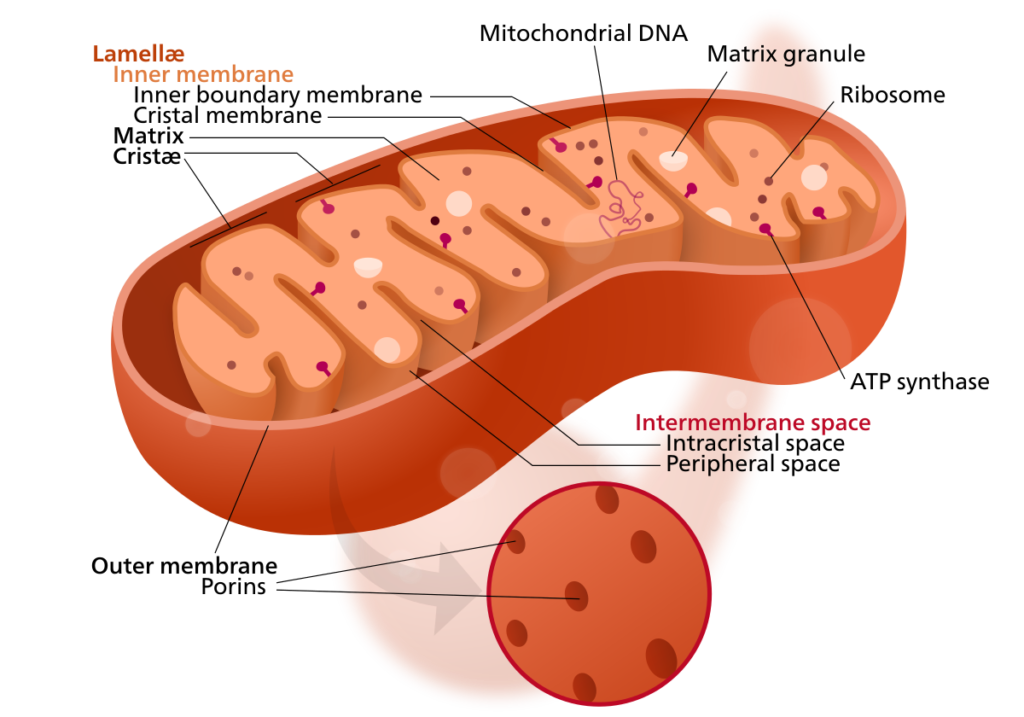Mitochondria are organelles found in most eukaryotic cells that play a crucial role in energy production. They are often referred to as the powerhouse of the cell due to their ability to generate ATP, the molecule used by cells to store and transfer energy.
One of the most interesting features of mitochondria is their genetic makeup. Unlike most other organelles in eukaryotic cells, mitochondria have their own genome. This genome is circular and contains genes that encode for proteins involved in energy production.
One of the proteins encoded by the mitochondrial genome is the ribosomal RNA, which is a component of the mitochondrial ribosome. The mitochondrial ribosome is responsible for synthesizing proteins that are essential for energy production.
The question of whether mitochondria have 70s ribosomes is a complex one. 70s ribosomes are found in prokaryotic cells and in the chloroplasts of plant cells. Mitochondria, on the other hand, are believed to have evolved from a type of bacteria that was engulfed by a eukaryotic cell.
Despite this bacterial origin, mitochondria have undergone significant changes over time as they adapted to their new role within the eukaryotic cell. One of these changes involved the evolution of a unique type of ribosome that is different from both bacterial and cytoplasmic ribosomes.
Mammalian mitochondrial ribosomes, for example, are 55S in size and consist of two subunits. These subunits are made up of proteins and rRNA molecules that are unique to mitochondria.
So, while mitochondria do have ribosomes, they are not 70s ribosomes like thoe found in prokaryotic cells. Instead, they have evolved their own unique type of ribosome that is tailored to their specific requirements.
Mitochondria are fascinating organelles that have their own unique genetic makeup and specialized ribosomes. While they may have originated from bacteria, they have evolved significantly over time to become an essential component of eukaryotic cells.
Are Mitochondrial Ribosomes 70S?
Mitochondria ribosomes are not 70S. While bacterial ribosomes are typically 70S and cytoplasmic ribosomes are 80S, mammalian mitochondrial ribosomes, also known as mitoribosomes, are 55S. This unexpected difference in size is likely due to the unique evolutionary history of mitochondria, which were once free-living bacteria that were engulfed by eukaryotic cells and subsequently evolved into an organelle. Mitoribosomes are composed of both mitochondrial and nuclear-encoded proteins and RNA, and are responsible for synthesizing proteins that are essential for mitochondrial function and energy production. Understanding the differences between mitoribosomes and other types of ribosomes is important for furthring our knowledge of mitochondrial biology and the role of mitochondria in health and disease.

Source: mdpi.com
Ribosomes in Organelles
The organelle that has 70S ribosomes is found in prokaryotic cells and the chloroplast. 70S ribosomes are smaller than the 80S ribosomes found in eukaryotic cells, and they are responsible for protein synthesis in these organisms. In prokaryotic cells, 70S ribosomes are found free in the cytoplasm and attached to the cell membrane. The chloroplast, which is an organelle found in plant cells responsible for photosynthesis, also contins 70S ribosomes. These ribosomes are responsible for synthesizing proteins necessary for the functions of the chloroplast, such as photosynthesis. It is important to note that while 70S ribosomes are found in both prokaryotic cells and the chloroplast, eukaryotic cells do not contain 70S ribosomes, but instead, they have 80S ribosomes.
The Presence of 80S Ribosomes in Mitochondria
There are 80S ribosomes in the mitochondria of eukaryotic animal cells. Mitochondria are semi-autonomous organelles that possess their own genetic material and protein synthesis machinery. The ribosomes in mitochondria are similar to the ones found in eukaryotic cytoplasm but differ in size and composition. The mitochondrial ribosome is made up of two subunits, a large 50S subunit and a small 30S subunit, that combine to form a 70S ribosome. However, the 70S ribosome found in mitochondria is dfferent from the 70S ribosome found in prokaryotic cells since it has additional proteins and RNA components. The 80S ribosome found in the cytoplasm of eukaryotic cells is also larger and more complex than the 70S ribosome. Thus, the ribosomes found in mitochondria have characteristics of both prokaryotic and eukaryotic ribosomes, making them unique and essential for mitochondrial protein synthesis.
Why Are Mitochondrial Ribosomes 70S and Not 80S?
Mitochondria are organelles that are responsible for energy production in eukaryotic cells. They have their own genetic material and ribosomes, which are involved in protein synthesis. The ribosomes in mitochondria are kown to be 70S, which is smaller than the 80S ribosomes found in the cytoplasm of eukaryotic cells. This difference in size is due to the evolutionary origins of mitochondria.
It is believed that mitochondria were once free-living bacteria that were engulfed by ancestral eukaryotic cells in a process known as endosymbiosis. Over time, these bacteria became integrated into the host cell and evolved into the mitochondria we know today. As a result of this evolutionary history, mitochondria still retain some features of their bacterial ancestors, including their 70S ribosomes.
In contrast, the 80S ribosomes found in the cytoplasm of eukaryotic cells are thought to have evolved from a fusion of ancestral bacterial and archaeal ribosomes. This fusion event likely occurred after the endosymbiosis of mitochondria, which is why mitochondria have 70S ribosomes while the rest of the eukaryotic cell has 80S ribosomes.
The reason why mitochondria have 70S ribosomes instead of 80S ribosomes is due to their evolutionary history as once-free-living bacteria that were engulfed by ancestral eukaryotic cells. This difference in ribosome size reflects the divergent evolutionary paths taken by mitochondria and the rest of the eukaryotic cell.
Cell Containing 70S and 80S Ribosomes
Ribosomes are complex molecular structures found in all living cells that are responsible for protein synthesis. The 70S and 80S ribosomes are two types of ribosomes found in different types of cells.
Prokaryotic cells, wich are simple, single-celled organisms lacking a nucleus and other membrane-bound organelles, contain 70S ribosomes. These ribosomes are smaller than the 80S ribosomes found in eukaryotic cells. 70S ribosomes consist of two subunits, the 30S and 50S subunits, and are responsible for synthesizing proteins in prokaryotic cells.
On the other hand, eukaryotic cells, which are more complex, multicellular organisms with a nucleus and other membrane-bound organelles, contain 80S ribosomes. These ribosomes consist of two subunits, the 40S and 60S subunits, and are larger and more complex than the 70S ribosomes found in prokaryotic cells. The 80S ribosomes are responsible for synthesizing proteins in eukaryotic cells.
The type of ribosome present in a cell depends on the type of organism. Prokaryotic cells contain 70S ribosomes, while eukaryotic cells contain 80S ribosomes.

Location of 80s and 70s Ribosomes
Ribosomes are cellular organelles that play a crucial role in protein synthesis. There are two types of ribosomes based on their size and location in dfferent types of cells: 80S ribosomes and 70S ribosomes. 80S ribosomes are found in eukaryotic cells, such as those of animals, plants, and fungi. These ribosomes are composed of two subunits, 60S and 40S, and their combined size is approximately 80S. In contrast, 70S ribosomes are found in prokaryotic cells, such as bacteria. These ribosomes consist of two subunits, 50S and 30S, and their combined size is approximately 70S. The size difference between these two types of ribosomes is due to differences in their RNA and protein content. While both types of ribosomes perform similar functions, their structural differences make them prime targets for the development of antibiotics that selectively target bacterial ribosomes, making them a promising target for drug development.
Ribosomes in 80S Organelles
Eukaryotic cells contain specialized organelles such as mitochondria, endoplasmic reticulum, and the nucleus, that are responsible for various cellular functions. These organelles contain 80S ribosomes, whch are responsible for protein synthesis. The cytoplasm of eukaryotic cells also contains free 80S ribosomes that are not associated with any organelle. The 80S ribosomes consist of two subunits, a large 60S subunit, and a smaller 40S subunit, which come together during protein synthesis. The ribosomes attached to the endoplasmic reticulum are responsible for synthesizing proteins that are transported outside the cell or to other organelles, while those in the cytoplasm synthesize proteins that stay within the cytoplasm or the nucleus. Therefore, eukaryotic cells contain 80S ribosomes in various organelles and the cytoplasm, all of which play a crucial role in protein synthesis and cellular function.
Do Mitochondria and Chloroplasts Contain 80S Ribosomes?
Mitochondria and chloroplasts do not have 80S ribosomes. Instead, they have bacterial-type ribosomes that are different from the 80S ribosomes found in the cytoplasm. Chloroplasts contain 70S ribosomes, while animal mitochondria have 55-60S ribosomes, and plant mitochondria have 70-80S ribosomes depending on the species. These specialized ribosomes are essential for the function of mitochondria and chloroplasts, allowing them to synthesize proteins and carry out their unique roles in the cell.
Location of 70S Ribosomes
70S ribosomes are found in the mitochondria of all multicellular organisms including plants and animals. Mitochondria, the powerhouse of the cell, is a double-membrane-bound organelle that plays a vital role in cellular respiration and energy production. 70S ribosomes are responsible for protein synthesis and are composed of two subunits, the large and small subunit. These ribosomes are distinct from the ribosomes found in the cytoplasm of cells, which are larger and known as 80S ribosomes. The presence of 70S ribosomes in the mitochondria is crucial for the proper functioning of these organelles and the overall cell metabolism.

Types of Cells with 70S Ribosomes
Prokaryotic cells have 70S ribosomes. Ribosomes are small, spherical structures found in all living cells that are responsible for protein synthesis. The number bfore the “S” in ribosome nomenclature refers to the sedimentation rate of the ribosome, which is determined by its size and shape. Prokaryotic ribosomes have a sedimentation rate of 70S, while eukaryotic ribosomes have a larger sedimentation rate of 80S. These ribosomes consist of two subunits, the large and small subunits, which work together to translate the genetic information contained in messenger RNA (mRNA) into a specific sequence of amino acids, ultimately forming a protein. The 70S ribosomes in prokaryotes are slightly smaller than the 80S ribosomes found in eukaryotes, reflecting the differences in their respective cell sizes and structures.
Number of Ribosomes in a Cell
The cell that has 70 ribosomes is a prokaryotic cell. These cells are characterized by their lack of a true nucleus and other membrane-bound organelles. Instead, their genetic material, which is a single circular chromosome, is located in the cytoplasm. Prokaryotic cells possess small, 70S ribosomes that are distinct from the larger, 80S ribosomes found in eukaryotic cells. This is an important difference because it allows researchers to develop antibiotics that target the 70S ribosomes, which are essential for protein synthesis in prokaryotic cells.
Do Mitochondria Contain 30S Ribosomes?
Mitochondria do not have 30S ribosomes. The ribosomes present in mitochondria are structurally and functionally different from those found in bacteria and eukaryotic cytoplasm. Mitochondrial ribosomes are known as mitoribosomes and are composed of small 33S and large 50S subunits, which togeter form a 78S mitoribosome. This mitoribosome is responsible for translating the genetic information encoded in mitochondrial DNA into proteins that are essential for mitochondrial function. It is important to note that the composition and structure of mitoribosomes vary across different organisms, with animal mitoribosomes being highly minimized and composed of only two rRNAs, 12S (SSU) and 16S (LSU).
Ribosomes Found in Mitochondria
Mitochondria have their own ribosomes, called mitochondrial ribosomes. These ribosomes are distinct from the ribosomes found in the cytosol or in other organelles such as the rough endoplasmic reticulum. Mitochondrial ribosomes are composed of two types of RNA molecules, the 12S and 16S rRNAs, wich are encoded by mitochondrial DNA (mtDNA). In addition to these RNA molecules, mitochondrial ribosomes also contain imported ribosomal proteins. The exact composition of mitochondrial ribosomes can vary depending on the species and the tissue type. The function of mitochondrial ribosomes is to translate the mRNA transcripts that are produced by the mitochondrial genome into proteins that are essential for mitochondrial function.

The Role of Ribosomes in Mitochondria
Mitochondria, the energy-producing organelles within eukaryotic cells, possess their own specialized ribosomes kown as mitoribosomes. These ribosomes are responsible for synthesizing a limited number of proteins that are crucial for the proper functioning and biogenesis of the oxidative phosphorylation system, which generates ATP, the cell’s primary energy source. Unlike the ribosomes found in the cytoplasm, mitoribosomes are smaller in size and differ in their protein and RNA composition. The unique structure and function of mitoribosomes make them a promising target for the development of novel antibiotics to treat bacterial infections, as the ribosomes in bacteria are more similar to those in mitochondria than to those in the cytoplasm of eukaryotic cells.
Conclusion
Mitochondria are essential organelles found in nearly all eukaryotic cells, responsible for producing energy in the form of ATP through the process of cellular respiration. They are also involved in many other cellular processes, such as calcium signaling, regulation of cell growth and death, and metabolism of lipids and amino acids. Mitochondria have their own DNA and ribosomes, which differ from those found in bacteria and cytoplasmic ribosomes. The dysfunction of mitochondria has been associated with various human diseases, including cancer, neurodegenerative disorders, and metabolic disorders. Therefore, understanding the biology and function of mitochondria is crucial for developing treatments and therapies for tese diseases, as well as for advancing our knowledge of fundamental cellular processes.
